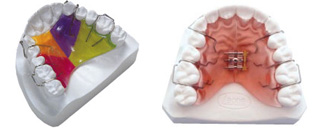Early Orthodontic Treatment: Braces for Young Kids
Some orthodontic conditions are simply easier to correct if they’re corrected early. And knowing that your child might need corrective dental work, or not need corrective dental work simply offers peace of mind. Interceptive orthodontic treatment is all about preventing more severe problems later on. It provides the opportunity for an orthodontist to have control over where the permanent teeth come in by addressing the structure of the jaw and teeth while the primary teeth are still in the mouth. By age seven, your child’s mouth has grown enough and has enough sound structure to know how it will develop as the permanent teeth start to emerge. Your child’s Dental Associates pediatric dentist is trained to identify bite issues at an early age and will refer a child to one of our orthodontists at the appropriate point in time.
The benefits of early intervention by a Dental Associates orthodontist include:
- A better prognosis for how the permanent teeth will develop
- The ability to correct any habits that may be the cause of development problems, such as thumb sucking or tongue pushing
- Correcting bite problems like an open bite, cross bite or deep bite
- The ability to guide the growth of the jaw to accommodate emerging teeth
- Lowering the risk of damage to any protruding teeth
- The ability to improve your child’s appearance
- Creating a more pleasing and functional arrangement of teeth, lips and face
- Alleviating future, and possibly more invasive, dental correction
- Increasing self-esteem and confidence in your child
Even if your child doesn’t need orthodontic treatment, a consultation from a Dental Associates orthodontist gives you the opportunity to become more comfortable with what an orthodontist can do to help your child if future treatment is necessary. We want to see your entire family smile for a lifetime. Building a relationship with us when your child young is just one of the ways we can make sure of those lasting smiles. Two-Phase Orthodontic Treatment for Children If your child’s early orthodontic consultation concludes that treatment is necessary, it will take a two-phase approach. The first phase will begin right away, while your child still has most of their primary teeth. The second phase will happen as your child gets older, at the appropriate time determined by your child’s growth and corrective dental needs.
The first phase, Early Treatment, is designed to:
- Enable correct biting and chewing
- Correct harmful oral habits
- Prevent a problem from developing
- Intercept a developing problem
- Guide the growth of the jaw bones that support the teeth so the teeth come in straight and the jaw grows in the correct alignment
- Lower the risk of damage or breakage to protruded front teeth
- Guide permanent teeth into a more favorable position
- Create a more pleasing arrangement of teeth, lips and face
- Establish long-term stability; the teeth remain where they are supposed to stay
- Improve appearance The second phase, Traditional Braces, is designed to:
- Move permanent teeth into their final positions
- Continue improving teeth function and facial appearance
- Continue to increase child’s self-esteem Orthodontic treatment and a child’s growth are meant to complement each other.

By timing treatment to stages of dental development, your orthodontist can take advantage of your child’s growth and development. Problems that can be treated in a growing child may alleviate more drastic and invasive procedures later.
Conditions That May Require Early Orthodontic Treatment There are a lot of reasons to have your orthodontist examine your young child’s mouth when they still have baby teeth. A thorough orthodontic evaluation will reveal just how the teeth and mouth are growing, and will give the opportunity for your orthodontist to provide interceptive treatment. Interceptive treatment basically prevents a problem before it happens.
Types of teeth and bite conditions that may be cause for early interceptive treatment include:
- Open bites
- Deep bites
- Cross bites
- Overjets
- Crowding
- Spacing
- Teeth not emerging in the right sequence
- Missing teeth
- Congenitally missing teeth
- Ankylosed teeth: a condition where the tooth stops erupting and stays in the same place, causing the permanent tooth to be displaced upon emergence
Orthodontics
- What are lingual or invisible braces ?!
- Gnathology
- Early Orthodontic Treatment: Braces for Young Kids
- Impacted Tooth
- Self-Ligating Appliance System
- Metal Or Traditional Braces
- Types of Braces
- Mini-Implants Or Mini-Screws For Orthodontics
- What Is Orthodontics?
- Lingual Braces
- EON Aligner
- Ceramic Braces